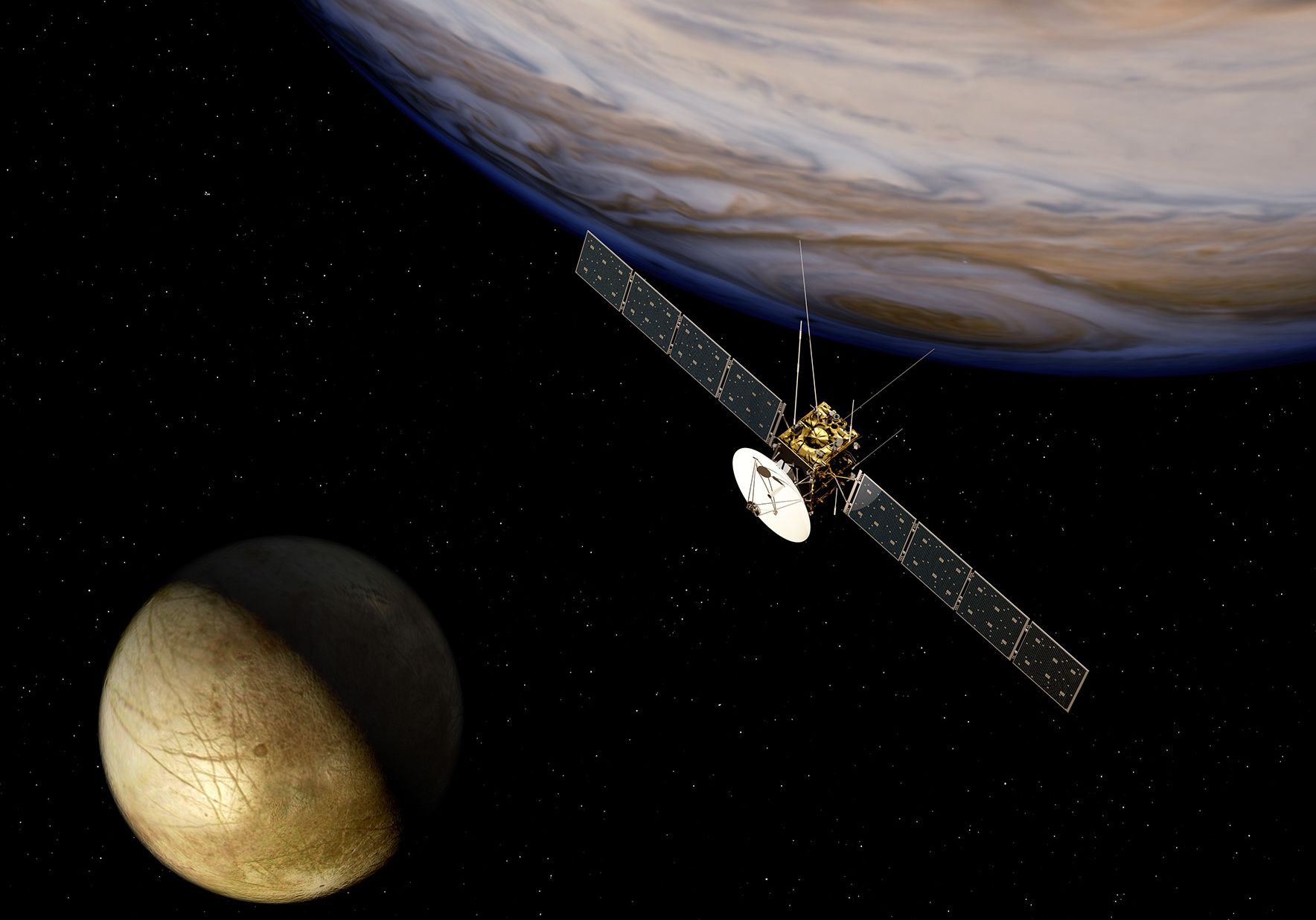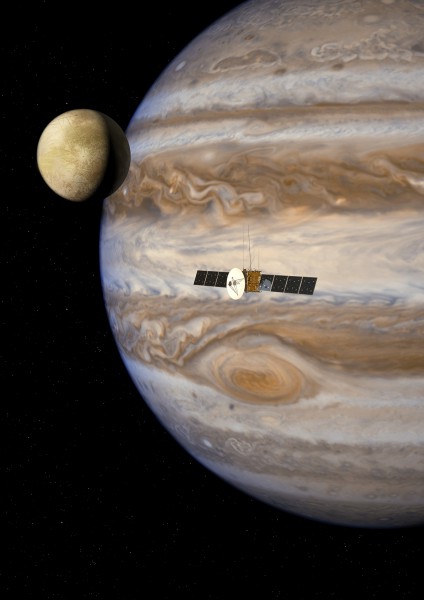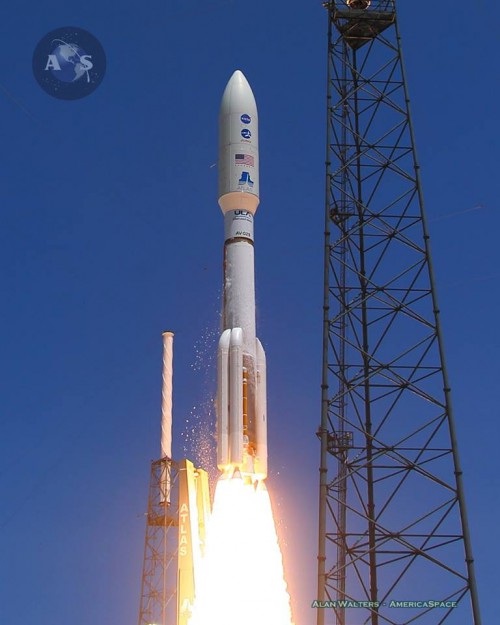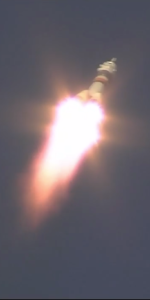
While one NASA/JPL spacecraft is less than a year out from its rendezvous with our Solar System’s largest gas giant, another Jupiter-bound spacecraft is making its way from the drawing board to becoming science reality. On Wednesday, Dec. 9, the European Space Agency (ESA) and Airbus Defence & Space announced that they had signed the contract for building the JUpiter ICy moons Explorer (JUICE). While this international mission is slated for a 2022 launch, Juno – a solar-powered spacecraft launched in 2011 – has been described as being in “excellent health,” and continues to stay on track for its July 4, 2016 arrival.
JUICE Contract Signed, Building To Commence
According to ESA, in July it was announced Airbus Defence & Space SAS in France would be JUICE’s prime contractor; a €350 million (approximately $385 million) contract was approved. ESA underscored that this contract covers “design, development, integration, test, launch campaign and in-space commissioning of the spacecraft,” but does not cover the Ariane 5 launch vehicle required to loft it into space (the launcher will be procured from Arianespace at a later time). It was further stated by ESA that JUICE will be assembled at Airbus Defence and Space GmbH in Friedrichshafen, Germany.

Like the Galileo spacecraft and soon, Juno, JUICE will orbit Jupiter at the onset of its mission, observing features such as the planet’s magnetosphere and faint rings. However, the spacecraft will also conduct unprecedented observations of several Jovian moons including Callisto and Europa, and will eventually orbit Ganymede, the planet’s largest moon. It is theorized that these moons may possess large oceans underneath their icy surfaces, and JUICE’s studies may shed some light on whether these moons may be habitable. Earlier this year, images obtained from the Hubble Space Telescope (HST) suggested that Ganymede may contain a large underground ocean.
JUICE is an international mission, a collaboration between 16 European nations, the United States, and Japan. NASA’s contributions were selected in early 2013, with proposals submitted in 2012. According to NASA, nine potential instruments were reviewed, and one was ultimately selected to fly.
NASA’s contribution is the spacecraft’s ultraviolet spectrometer, which will supply images of the Jovian moons in a bid to understand how they interact with the planet’s environment. NASA stated other objectives of this instrument: “The instrument also will determine how Jupiter’s upper atmosphere interacts with its lower atmosphere below, and the ionosphere and magnetosphere above. [It will also] will provide images of the aurora on Jupiter and Ganymede.” The principal investigator for this instrument is Randy Gladstone of Southwest Research Institute in San Antonio, Texas.
NASA has also contributed significantly to two other JUICE instruments, the Radar for Icy Moon Exploration and Particle Environment Package, which will respectively use radar to penetrate the crusts of the moons and conduct measurements of Jupiter’s hostile, complex environment. The space agency will contribute $100 million for these instruments through 2033. Overall, 11 experiments will be carried aboard the spacecraft.
If launched in 2022, JUICE is expected to arrive at Jupiter in 2030 following a seven-and-a-half year journey, eventually settling into orbit around Ganymede in 2033.
While JUICE is an international collaboration, NASA has set its sights on its own Jovian icy moon mission, having entered the “formulation” phase in July for a Europa mission slated to take place in the 2020s. JPL will be managing this project. The Galileo spacecraft returned evidence that the enigmatic Europa may also possess water underneath its icy mantle; this belief was further cemented by observations made by HST in 2012. Nine science instruments have been selected for NASA’s Europa mission. It is hoped that this future mission may also provide clues about Europa’s possible habitability.
Juno Update: Spacecraft In “Excellent Health,” Juno Team Solicits Ground Images
The Juno spacecraft has certainly come a long way since its launch on a balmy August day in 2011, powered by a United Launch Alliance (ULA) Atlas 551 launch vehicle from Cape Canaveral Air Force Station’s Space Launch Complex 41. As of mid-November, the Juno spacecraft has traveled approximately 522 million miles (841 million kilometers) from Earth, with approximately 85 million miles (137 million kilometers) left to go before it enters Jupiter’s orbit in mid-2016. According to Juno’s website, the solar-winged spacecraft remains in excellent health.

The Juno team, led by principal investigator Scott Bolton, is inviting amateur astronomers to submit their own images of Jupiter from telescopes in a bid to help the team identify changes in the planet’s cloud features over time. Juno will possess a highly elliptical orbit and will travel far away from Jupiter for periods, making specific features more difficult to identify.
Juno will also have the capability to get closer to the planet than any other spacecraft in history; at its closest approach, it will pass within 3,100 miles (5,000 kilometers) of the gas giant’s cloud tops. Its “JunoCam” will give researchers and space enthusiasts alike the best high-resolution images of Jupiter since Voyagers 1 and 2 flew by the planet in 1979. “This is really the public’s camera. We are hoping students and whole classrooms will get involved and join our team,” Bolton enthused.
While Juno’s team prepares itself for the spacecraft’s historic arrival at Jupiter in a matter of months, international space agencies and NASA continue to design and investigate other Jupiter-bound missions in a bid to further understand our Solar System’s origins, and perhaps find habitable worlds beyond Earth.
Want to keep up-to-date with all things space? Be sure to “Like” AmericaSpace on Facebook and follow us on Twitter: @AmericaSpace




